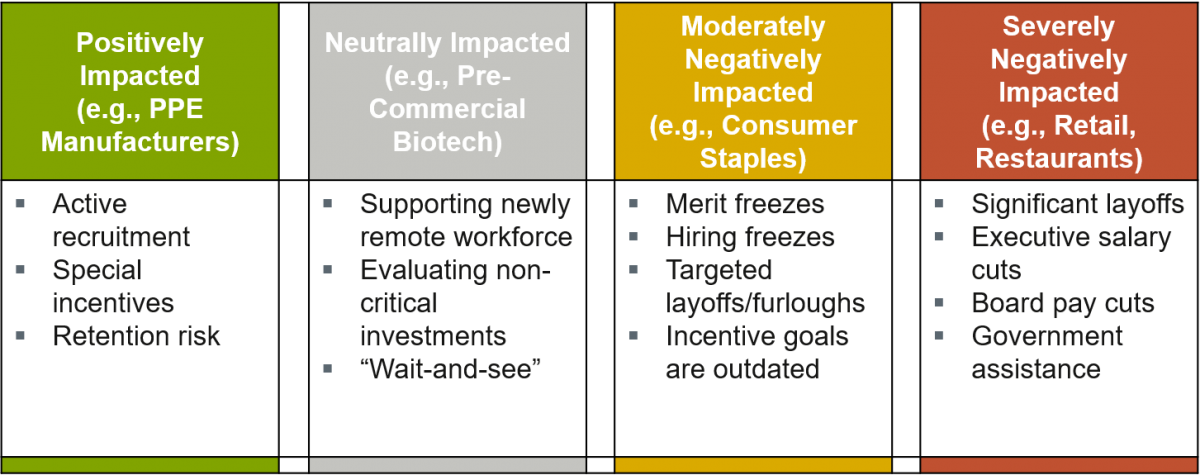
Article | Jun 2020 | Agenda
Managing Award Cycles in an Unmanageable Environment
COVID-19 has affected individual companies quite differently; it’s through this lens you should evaluate near-term changes to executive pay programs.
In our current economy, directors are managing a number of executive compensation–related decisions; although unlike “normal” downturns, the issues are more complex and visible—and potentially more controversial.
What is clear as this unfolds is that although COVID-19 has had far-reaching economic impact, the degrees of impact on individual companies’ stability, revenue, and outlook vary widely, especially by sector. It’s this lens through which we can evaluate the near-term implications to executive pay programs.
We have some clients that have actually seen business improve, and some are undergoing change, but on a relatively neutral scale. For those in these categories, the outlook is not dire. There is a reasonable expectation that annual goals can still be substantially met and little reason to make changes to the pay program. However, their executive teams are often working very hard to manage disruption and return steady shareholder value. I’m advising compensation committees in this position to balance the need to reward and possibly retain a solid team without appearing to provide an opportunistic windfall.

In a recent online poll by Pearl Meyer, 60% of respondents self-reported as “moderately impacted,” and we expect they will also make little to no change to current plans, either annual or long-term. While it’s an understatement, the simple fact is, it’s a bad year, and bad years happen. These management teams will see a below target or even zero bonus, with at least one long-term incentive cycle that is also negatively impacted. This is to be expected in a recession and altering plans as a result of a dip is not usually an attractive option with most long-term plans because of the accounting and disclosure issues involved.
Looking ahead, it would be wise for this group to start thinking now about scenarios for next year's incentive plans. Should the effects of the pandemic run longer or be more severe than expected, consider moving away from traditional performance measures, which may continue to be out of management’s control, and possibly set goals at a more conservative level or flatten the slope of the payout scale. This can help to combat prospective business uncertainty.
Moving closer to the severely negatively affected category, it’s more urgent to think about adjustments, at least to the current annual incentive plan, which may be needed to address what may be a real retention or motivation need. Look to performance in the pre-pandemic portion of the year or write off the first part of the year and put in a new plan for the remainder of the year. The goals for your rest-of-the-year plan could focus on survival (e.g., cash flow) or actions that position the business for maximum advantage in a recovery. There are opportunities to structure incentive goals to focus on improving the business during a time when bottom line results are unachievable due to exogenous conditions.
After coping with this immediate crisis, boards, no matter where they fall on the COVID-impact spectrum, should shift from thinking about next month to 2021. Directors should expect pressure from management to focus on the things within management's control. We need to recognize the exhaustion this pandemic has caused all employees and that future stability or predictability will not emerge any time soon.
As you are developing the next incentive plan bearing this in mind, think about important milestones that management can drive and that create lasting value. Entering 2020, there was a growing investor-backed sentiment that “value” extends beyond shareholders to include employees, communities, and society as a whole. It’s in the background right now due to the crisis, but it will be back and be stronger due to the impact of COVID-19. This could be the right time for some of your company’s sustainability goals to find their way into the executive incentive plan.